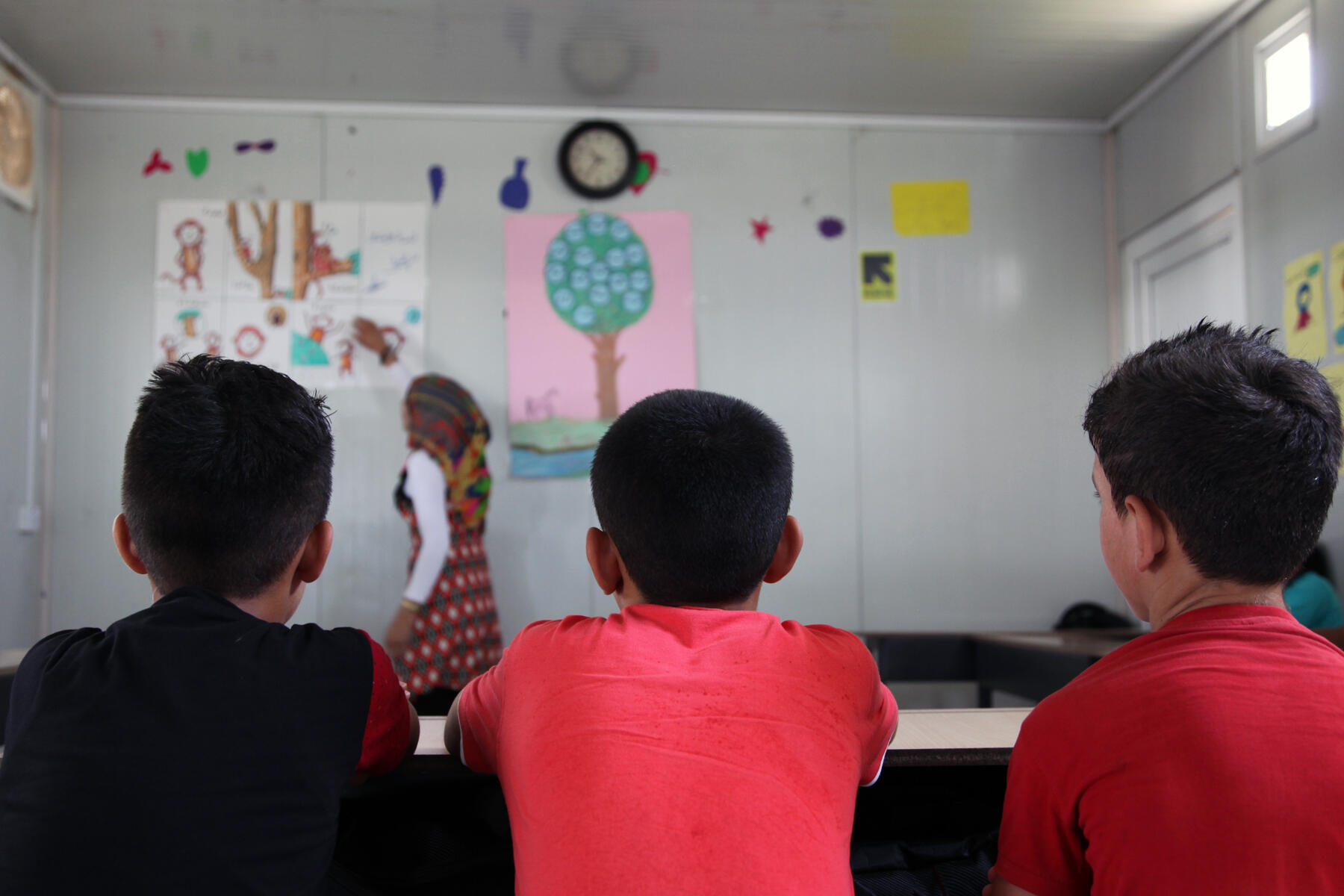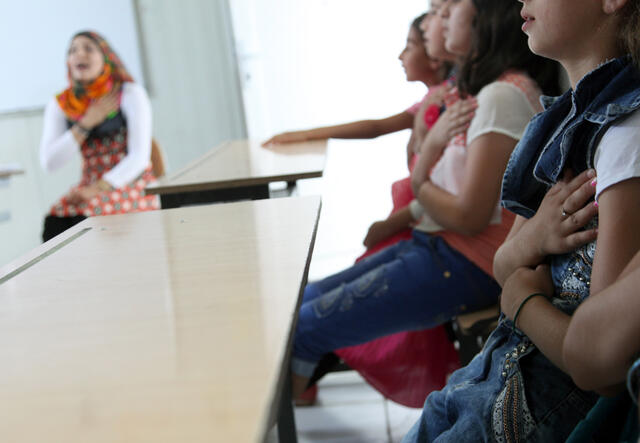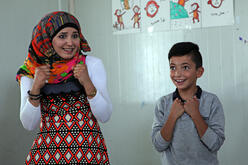
The battle for Mosul has once again brought the world's attention to a country that has been struggling with one of the biggest humanitarian crises in the Middle East for some time.
Iraq is not only home to over 3.4 million displaced Iraqis, but also provides sanctuary for almost a quarter of a million Syrian refugees.
For children that have fled war, it’s one thing to get them back into school. But, with many suffering from toxic stress, it’s another thing to help them continue to learn.
Standing in front of her class of Syrian refugees in Arbat Refugee Camp, in the Kurdish region of Iraq, teacher Shirin Ezaddin Abdullah asks her students to close their eyes.
The children oblige and begin to take deep breaths in and out while Shirin guides them through an exercise called ‘the five candles’. It is her favourite exercise to use with her class, all of whom were forced to flee their homes by the war in Syria.

Shirin holds up her hand in front of her face and describes how they should picture themselves inhaling the scent of a flower, and then when exhaling “imagine you are blowing out five candles.” She repeats this five times, until the children have blown out all five of the candles.
The activity helps to calm the students, giving her the ability to capture their full concentration.
“For the students who pay attention and follow along I have noticed changes in their behaviour,” said Shirin. “When there is no electricity it is very hot and it is hard to pay attention. Exercises like the five candles technique help me to bring the focus back to the lessons.”

For children that have experienced war and conflict, social and emotional learning methods like the five candles technique can help to mitigate the effects of trauma, by providing children with the tools to focus, control their emotions, interact with others and cope with the 'toxic stress' caused by conflict.
“The children love the belly breathing,” Shirin explains. “They express their enthusiasm to do these activities in class whenever they have the opportunity.”
Social and emotional learning techniques have been shown to rebuild healthy brain structures and neurological connections that are at risk of being damaged by trauma-induced 'toxic stress'. Longer-term, benefits to children include improved academic performance, better social skills, positive self-image, as well as decreased aggression and emotional distress.
Shirin has even found that some of her students have begun to practice the techniques by themselves. When she arrives at the classroom in the morning she often finds a number of the class are already there at their desks, eyes closed, one hand on their chest and one on their belly, practicing the breathing exercises that she has taught them.
Across the Syria region, there are over 6.5 million children like Shirin's class that are refugees or have been displaced by war.
In classrooms across Lebanon, northern Syria, and for both internally displaced and Syrian refugee children in Iraq, the IRC uses a social and emotional learning approach to help children deal with and overcome toxic stress, and get them back to learning.
As part of the IRC’s extensive response to the Mosul emergency, we are starting to establish Safe Healing and Learning Spaces which incorporate a social and emotional learning approach. We know that the challenges for displaced children are only just beginning. Shirin’s approach will be crucial as we support these children to rebuild their education and their lives.
Learn more